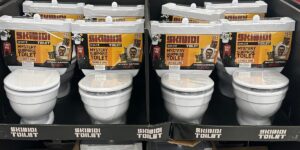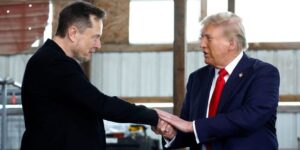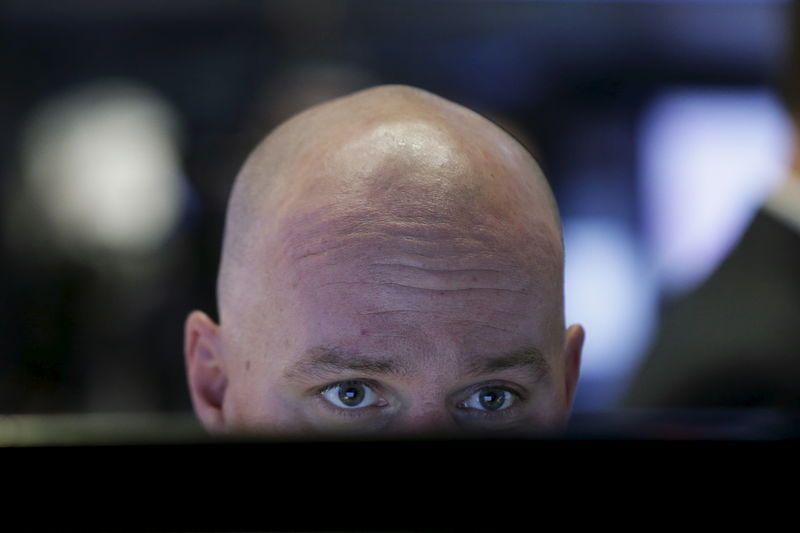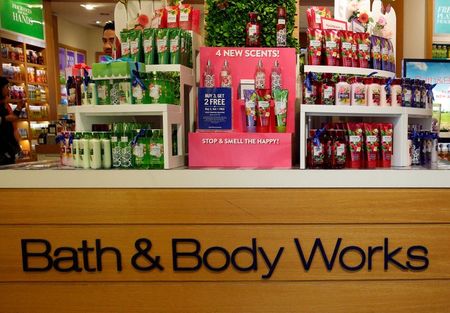Motorcar Parts of America Inc. (MPAA) has announced a strong start to fiscal 2025, with a 6.4% increase in net sales to $169.9 million in the first quarter. The company, a leading provider of aftermarket automotive parts, also reported an improvement in gross profit and is taking strategic steps to bolster sales and efficiency.
Despite facing a non-cash mark-to-market foreign exchange loss and severance expenses, MPAA remains optimistic about its Diagnostic and Heavy-Duty businesses and the overall aftermarket parts market.
Key Takeaways
- Record first-quarter sales of $169.9 million, up 6.4% year-over-year.
- Improved gross profit with expectations of continued advancement.
- Non-cash foreign exchange loss and severance expenses impacted results.
- Cost reduction efforts expected to save approximately $7 million annually.
- Positive cash flow anticipated for the full fiscal year.
- Sales growth projected between 3.9% and 6.6% year-over-year.
- Operating income target set between $62 million and $67 million for the fiscal year.
- Increased sales in the Mexican market and success with the Quality-Built brand.
Company Outlook
- MPAA is focused on driving shareholder value, nominating two new board candidates.
- The company is committed to cost reduction and efficiency improvements.
- Introduction of new part numbers to support growth is a priority.
Bearish Highlights
- Operating expenses rose to $35.6 million from $16.1 million the previous year, mainly due to severance expenses.
- Net bank debt increased to $136.3 million from $114 million the previous year.
Bullish Highlights
- After excluding certain items, operating expenses decreased to $20.7 million.
- Product mix showed diversity with rotating electrical products leading at 65%.
- Interest rates are declining, positively affecting interest expenses.
- The Mexican market is growing, with rising disposable income and evolving consumer behavior.
- Major chains are increasingly adopting the Diagnostic business.
Misses
- The company faced a non-cash mark-to-market foreign exchange loss.
- Severance expenses of $2.9 million were incurred due to headcount reductions.
Q&A Highlights
- Selwyn Joffe discussed the significance of the Mexican market, highlighting the opportunity as worth over $100 million.
- The company is leveraging its global platform to improve efficiency.
- MPAA has strong liquidity, with over $90 million in resources available.
- The next conference call is scheduled for November, where further updates will be provided.
InvestingPro Insights
Motorcar Parts of America Inc. (MPAA) has shown resilience in the face of challenges, as evidenced by its latest financial results. To provide a deeper understanding of the company’s financial health and market position, we bring you insights from InvestingPro.
InvestingPro Data:
- The company’s market capitalization stands at $118.92 million, reflecting its current valuation in the market.
- MPAA has a negative P/E ratio of -1.79, indicating that it has not been profitable in the last twelve months.
- Despite the lack of profitability, revenue growth remains positive, with a 7.23% increase over the last twelve months as of Q1 2025, and a 6.38% increase in the first quarter of 2025.
InvestingPro Tips:
- Analysts predict that MPAA will turn profitable this year, which could be a sign of a turnaround for the company and a potential increase in shareholder value.
- The company does not pay a dividend, which may be relevant for income-focused investors considering MPAA’s stock.
For investors seeking a more comprehensive analysis, there are additional InvestingPro Tips available on the Motorcar Parts of America Inc. profile at These tips can provide further guidance on the company’s valuation, financial performance, and market trends.
Full transcript – Motorcar Parts of America Inc (MPAA) Q1 2025:
Operator: Thank you for standing by. My name is Kayla, and I will be your conference operator today. At this time, I would like to welcome everyone to the Motorcar Parts of America Inc. Fiscal 2025 First Quarter Conference Call and Webcast. [Operator Instructions] I would now like to turn the call over to Gary Maier, Vice President of Corporate Communications and Investor Relations. You may begin.
Gary Maier: Thank you, Kayla, and thanks, everyone, for joining us for our call. Before I turn the call over to Selwyn Joffe, Chairman, President and Chief Executive Officer and David Lee, company’s Chief Financial Officer, I’d like to remind everyone of the Safe Harbor statement included in today’s press release. The Private Securities Litigation Reform Act of 1995 provides a Safe Harbor for certain forward-looking statements made during today’s call. These forward-looking statements are based on the company’s current expectations and beliefs concerning future developments and their potential effects on the company. There can be no assurance that future developments affecting the company will be those anticipated by Motorcar Parts of America. Actual results may differ from those projected in the forward-looking statements. These forward-looking statements involve significant risks and uncertainties, some of which are beyond the control of the company and are subject to change based upon various factors, in particular, expectations about anticipated future growth and opportunities with customers may not be achieved. The company undertakes no obligation to publicly revise or update any forward-looking statements, whether as a result of new information, future events or otherwise. For a more detailed discussion of some of the ongoing risks and uncertainties of the company’s business, I refer you to the various filings with the Securities and Exchange Commission. I would now like to turn the call over to Selwyn to begin today’s call.
Selwyn Joffe: Thank you, Gary. I appreciate everyone joining us today. We were encouraged by our record sales performance for the quarter and remain optimistic about the quarters ahead and achieving our full-year targets. For the quarter, our gross profit and gross margin metrics improved, which David will discuss in more detail, and we expect to realize further improvements through solid sales performance combined with ongoing strategic initiatives to further enhance operations. Unfortunately, our results for the fiscal first quarter were impacted by a sharply unfavorable non-cash mark-to-market foreign exchange loss from the lease liabilities and forward contracts due to a strong dollar versus the peso. From an operational standpoint, results were impacted by onetime severance expenses related to strategic cost reductions. This initiative will generate expected annualized savings of approximately $7 million. Approximately 90% of these savings will reduce cost of goods sold and the remainder will reduce operating expenses. This action was part of a multiyear relocation process to reduce cost, utilizing our new low-cost global footprint and facilitate further operating efficiencies. We are actively exploring additional initiatives to further reduce cost of goods sold. I should note our results for the quarter reflected some industry choppiness with the month of June regaining some momentum. This bodes well for the current fiscal second quarter, which historically is stronger than the first quarter. We are off to an excellent start for the second quarter with a strong July. We operate in a market where deferring repairs is not a viable option for too long, other than rotating electrical, which you can’t defer at all. Hot weather will certainly hasten the failure of all parts that we offer. Let me take a moment to highlight a few key near-term strategic initiatives that support our favorable outlook. As I noted during our year-end call, volume increases in our brake program will help absorb overhead, which in turn will result in accretion to overall margins. We expect accelerating brake-related product sales will lead to more opportunities to take advantage of efficiencies from both purchasing and production. As many of you know, we started our Brake Caliper business as a greenfield operation in August of 2019. And today, we are one of the leading suppliers in this category. As our newer brake product lines gain traction, we expect more efficient inventory turns to further support initiatives to neutralize working capital. Second, with respect to generating cash from working capital on a year-over-year basis, we are focused on inventory and accounts payable, which David will expand upon shortly. We have implemented processes to extend days outstanding on accounts payable and to enhance inventory efficiencies. These processes are still in their early stages, however, we are recognizing meaningful benefits, in particular with our Supply Chain Finance program. We continue to evaluate allocation of capital to maximize shareholder value. The first quarter working capital ratios were somewhat negative, though we are confident that working capital ratios will move in the right direction, as David will discuss further. Another positive ongoing initiative is the acceleration of our new part number introductions, targeting at least 800 per year, as supported by the introduction of more than 150 new part numbers last month, covering an additional 49 million vehicles on the road. This maintains our leadership position in the categories we supply, meets the consumer need and adds organic growth to our sales base. Not only are we growing organically, but we have secured meaningful new business commitments across all of our product lines. With respect to our Diagnostic business, as I’ve previously mentioned, we expect to sell more than $100 million of diagnostic equipment within the next 3 years with further opportunities pending. We expect additional service revenue as more testers are deployed. We expect more opportunities outside North America as the business evolves. With regard to our Heavy-Duty business, we continue to leverage our reputation and industry position in this market, particularly with regard to supplying alternators and starters to our channel partners who are leaders in the Heavy-Duty aftermarket segment. Our growth opportunities continue to gain momentum across multiple platforms, such as agriculture, Class 8 trucks, refrigeration, construction, material handling and transit/motor coaches. Dixie is also evolving as an important supplier to the heavy-duty original equipment manufacturers. As the new fiscal year evolves, we remain focused on sales, profitability and neutralizing working capital. We are confident that our sales and profitability will grow organically and with our strong new business commitments, as I mentioned earlier. This, along with numerous efficiency initiatives, will enhance profitability and improve cash flow generation. From a strategic standpoint, we are continuing to leverage our strengths, including great products manufactured at state-of-the-art facilities, solid customer relationships, industry-leading SKU coverage, not to mention our value-added merchandising and marketing support. I should mention that we opened a new facility in 2024 in Malaysia to support manufacturing of wheel hubs for direct shipment to our customers, which is expected to enhance our competitive position. Our Hard Part sales in Mexico continue to gain momentum as we experienced increased demand for our aftermarket parts. The rate of growth in this market is exciting, and we are well positioned to utilize our footprint to meet the growing demand. We are focused on increasing share in this region. We continue to benefit and grow sales via our relationships with U.S.-based retailers who are gaining a presence in this emerging market. Favorable long-term industry dynamics continue to bode well for the company, and we are extremely well positioned for sustainable top- and bottom-line growth in our Hard Parts business, as well as our Testing Solutions business. We are focused on growth across all the product lines, including our quality build brand, which is gaining market share within the professional installer market. This includes our most recent additions to our portfolio of brake calipers, brake pads and brake rotors. I reiterate, as we grow these product lines, we expect overall gross margin accretion. In short, we have the capacity and capabilities to support our customers’ increasing demand across multiple lines. Our expected positive cash flow on an annualized basis will enable us the flexibility to further pay down debt and pursue other related opportunities to enhance shareholder value. In conclusion, non-discretionary aftermarket parts of the internal combustion engine market will be here for decades, an outlook supported by recently updated industry data showing that the average age of vehicles is now 12.8 years. It is worth highlighting that 98.8% of the U.S. car park is comprised of hybrid and internal combustion vehicles. One of our key competitive advantages is our ability to offer a broad range of applications for all makes and models. We remain focused on newer model applications and our ability to meet expected demand as these vehicles enter the replacement market. Finally, before I turn the call over to David, I’d like to comment on our recent announcements regarding Jack Liebau and Anil Shrivastava, who are standing for election to our Board at the company’s annual meeting next month. Their impressive backgrounds and qualifications are detailed in the press releases and proxy statement. Let me just say both of these candidates offer unique perspectives and insights that will complement our commitment to driving shareholder value, at a particularly exciting point in the company’s history. These two fine candidates are indicative of our commitment to our Board refreshment program. I encourage everyone to read their biographies and support the nominees. I’ll now turn the call over to David to review our results in greater detail.
David Lee: Thank you, Selwyn, and good morning, everyone. I encourage everyone to read the earnings press release issued this morning as well as the 10-Q that will be filed later today. Let me first reiterate key financial performance metrics for our fiscal ‘25 first quarter that we highlighted in this morning’s news release. Net sales increased 6.4% to a first quarter record of $169.9 million. Gross profit increased 9.8% to $29.2 million. Gross margin increased modestly to 17.2%. Operating results impacted by an unfavorable non-cash $11.1 million foreign exchange loss from lease liabilities and forward contracts, implemented cost reduction initiatives to provide expected annualized savings of approximately $7 million. Net sales for the fiscal ‘25 first quarter increased 6.4% to a first quarter record, $169.9 million from $159.7 million in the prior year. Gross profit for the fiscal ‘25 first quarter increased 9.8% to $29.2 million from $26.6 million a year earlier. I should mention that gross profit for the quarter was impacted by non-cash items. The non-cash items reflect core and finished good premium amortization and revaluation of cores on customer shelves, which are unique to certain of our products required by GAAP. The total for these non-cash items in the quarter was approximately $2.7 million. A more detailed explanation of core accounting is available in a video posted on the company’s website. Gross margin for the fiscal ‘25 first quarter increased to 17.2% from 16.6% a year earlier. Gross margin for the fiscal first quarter was negatively impacted by higher returns as a percentage of sales, but we expect to return to normalized return levels going forward. Additional prices increases in effect and operating efficiencies will enhance gross margin, due primarily to a $15.3 million increased non-cash mark-to-market foreign exchange loss compared with the prior year and a $1.9 million increased expense resulting from currency exchange rates compared with the prior year as well as $2.9 million severance expenses, operating expenses were $35.6 million compared with $16.1 million last year. I should note that excluding these items above, operating expenses decreased by $644,000 to $20.7 million compared with $21.3 million a year earlier. Non-cash loss for the foreign exchange impact of lease liabilities and forward contracts was $11.1 million compared with a non-cash gain of $4.3 million a year earlier. In addition, the company incurred a $2.9 million severance expenses due to headcount reductions in connection with our strategy to utilize our global footprint to enhance operating efficiencies with expected annualized cost reductions of approximately $7 million, which includes salary, infrastructure and other related operating expenses. Results for the fiscal first quarter were impacted by $2.7 million of higher interest expenses primarily due to increased collection of receivables, utilizing accounts receivable discount programs on higher sales. Partially offset by lower average outstanding balances under the company’s credit facility. Interest expense was $14.4 million compared with $11.7 million for last year, which is primarily related to accounts receivable discount programs. Interest expense related to accounts receivable discount programs was $9.5 million compared with $6.3 million for the prior year. We are working diligently to address the higher interest environment, particularly areas that we can control. In addition, we continue to work with our customers to mitigate higher interest rates. For the first quarter, income tax benefit was $178,000 compared with $9,000 income tax benefit for the prior year. The low effective tax rate benefit for the fiscal first quarter was due in part to the inability to recognize the benefit of losses at specific jurisdictions. However, we expect these losses will be utilized against future profits, which will benefit future tax rates. Obviously, there are various factors impacting the tax effect. As a result of the items discussed above, net loss for the fiscal ‘25 first quarter was $18.1 million, compared with a net loss of $1.4 million a year ago. With higher expected sales volume moving forward and the full impact of certain price increases already in effect as well as operating efficiencies, results are expected to further improve. Due primarily to the items I discussed previously, EBITDA for the fiscal first quarter was negative $1.1 million, reflecting the negative $12.6 million impact of non-cash items and $2.9 million in cash items, in Exhibit 3 of this morning’s earnings press release. EBITDA before the impact of non-cash and cash items mentioned above was $14.4 million for the first quarter. Now we will move on to cash flow and key corporate items. The company used cash of approximately $20.8 million in operating activities, during the fiscal ‘25 first quarter, impacted by a reduction of accounts payable related to the seasonal inventory growth during the second half of fiscal year 2024 to support expected business increases for fiscal year 2025. We anticipate an increase in operating profit on a year-over-year basis for fiscal ‘25 and the generation of positive cash flow for the year, supported by organic growth from customer demand and operating efficiencies from our global footprint expansion. In addition to our goal of generating increased operating profits, we’re diligently focused on opportunities to neutralize working capital, including customer demand, planning, enhanced inventory management, and further extending our vendor payment terms. We expect increasing financial performance from both new and existing product lines, including our emerging brake categories. Net bank debt was $136.3 million at the end of the quarter, compared with $114 million as of March 31, 2024. However, net debt was lower compared with $168.1 million at prior year June 30, 2023. Total cash and availability was approximately $90 million. As previously provided, our expectation for fiscal ‘25 is to achieve sales in the range of $746 million and $766 million, representing between 3.9% and 6.6% year-over-year growth respectively. We expect to see margin accretion from efficiencies related to higher volume, price increases, and cost-cutting initiatives. With respect to cash flow, our expectation is to generate positive cash flow for the full fiscal year as I previously highlighted. Operating income is expected to be between $62 million and $67 million before the non-cash foreign exchange impact of lease liabilities and forward contracts, and the non-cash impact of revaluation of cores on customer shelf and also before onetime severance expenses. The company estimates other non-cash items will be approximately $17 million, including core and finished good premium amortization and share-based compensation. The company estimates depreciation and amortization will be approximately $11 million. In summary, operating income before the impact of the non-cash and cash items mentioned previously, and before depreciation and amortization, is expected to be between $90 million and $95 million. For further explanation on the reconciliation of items that impact results and non-GAAP financial measures, please refer to Exhibits 1, 2, 3 in this morning’s earnings press release. I would now like to open the line for questions.
Operator: [Operator Instructions] Our first question comes from the line of Matt Koranda with ROTH Capital Partners. Your line is open.
Unidentified Analyst: Good afternoon. This is Joseph on for Matt today. I wanted to ask if you guys could provide a breakdown of revenue by product in – by product line in 1Q? And if you guys can comment on inventory at retail customers and sell-through versus sell-in dynamics in your key product categories during 1Q and through quarter-to-date?
David Lee: Okay. I could start. For the first quarter, the product mix was 65% rotating electrical, wheel hubs was 7%, brakes were 24% and others was 4%.
Selwyn Joffe: Yes. In terms of just moving forward and talking about the retailers and inventory levels, I mean, I think in general, what we’re seeing is that there’s a pickup in the business. I mean, I think we’ve had some softness, I think that there’s been – wherever there’s been a possibility for the consumer to defer maintenance, they’ve had that deferral. But the – I think the hot weather and we’re seeing – we’re certainly – our sales in July, but frankly, it was the highest July we’ve ever had in the history of the company. So we’re seeing customers bring in inventory and with the expectation of some pickup. I mean, I don’t think we’re totally there yet, but as an industry, but due to, again, disposable income of the consumer, but, certainly. I think we are on our way, and we’re extremely encouraged by our progress right now. I think that in conjunction, by the way, with the significant cost savings initiatives, one, we’ve completed and others that are still in process. We’re excited about where we’re moving to.
Unidentified Analyst: And if I could just squeeze one more in there, we wanted to see what your latest thinking on interest expense, given rates are coming down? How should we think about the cash interest savings potentially to come for the rest of the year?
Selwyn Joffe: Well, I mean every point in interest reduction just on the supply chain factoring is worth $7 million to us. So we’re encouraged by the reduction in interest. I mean, that’s certainly been a tremendous headwind for us. We are encouraged that the rates are coming down, and we’re excited about that. And – but we’re not stopping at that. I mean we’re taking every bit of waste or what – when we use the concept of lean manufacturing and lean operations, waste has to be eliminated. And with the volumes that we’re getting now, and our new – some of our new product lines, we can take and – it’s not – I hate to use the word waste a little bit, but we can take our efficiencies up pretty dramatically. But that is a sort of term of art for the manufacturer. So we’re excited. I mean, we think that there’s a lot of tailwinds for us on the earnings side moving forward.
Unidentified Analyst: Alright. Thank you for taking my question, guys. I will back into queue.
David Lee: Thank you very much.
Operator: And your next question comes from the line of Bill Dezellem with Tieton Capital. Your line is open.
Bill Dezellem: Thank you. Would you please start with inventory and discuss kind of why you saw that increase versus a year ago level?
David Lee: So the inventory, there was a small growth in the first quarter, primarily for the update – upcoming – sales increases we’re expecting. So we are ramping up our guidance, again, is a strong growth for the full fiscal year. So we need the inventory to supply our demand.
Selwyn Joffe: Yes. And I think you’ll see that moderate pretty dramatically. I mean, as we’re coming into our season, our second quarter is much stronger than our first quarter. So you’ll see significant progress in working capital as we get through this quarter.
Bill Dezellem: Thank you. And then on that note, when does the next tranche of Brake business come into your revenues?
Selwyn Joffe: Let me try and – the biggest piece starts in January, but we have other new business that’s starting between now and then. We have a new business in Wheel Hubs that’s starting now, and we have additional Rotating Electrical business that’s starting in the next few 2 to 3 months and then additional Brake business starting and significant new business in our Diagnostic business and some additional Hard Parts categories and – and again, we don’t want to get ahead of our skis. I mean we’ve got this in our guidance, but the amount of opportunities that we’re getting and seeing, have the correct pricing with the correct operating efficiencies, certainly are driving to see better profit metrics as we get through this year.
Bill Dezellem: Thank you. And I think in the opening remarks, David, you had mentioned that returns were higher than normal. Could you walk through the dynamics behind that? And what aspect of that is unique versus something that may naturally happen again?
Selwyn Joffe: Yes. So it happens every now and again, Bill. And it’s – and I’m not going to call out customers. We have one customer, a very large customer, whose purchases were at a lower level but returns are – there’s a general rate of return. And so you get the same returns back regardless of the purchases. So the returns as a percentage of purchases, for this particular customer, were higher. Now that has changed. It has already reversed out in this quarter. So again, we’re a little early in the quarter, but so far, very, very, very strong, and those return levels should come back to normalized levels. They are at normalized levels now, hopefully, that will maintain itself. And then we had one other – and it’s not – that won’t come back, but we had one other large incentive program that was taken early as a result of renewal of a contract. So – and that’s – it’s one time for that particular event, but I mean, that affected us a little bit as well in the quarter. But we – again, those are both behind us and again, we’ve seen significantly more positive energy in sales right now.
Bill Dezellem: Thank you. What was the – I missed in the opening remarks, the dollar impact of that to income?
David Lee: We did not disclose the dollar amount, but it did have a small impact on the gross margin percentage as well as sales.
Bill Dezellem: Great. Thank you. And then one additional question relative to the Quality-Built brand, are you seeing any spillover from that brand’s success in the professional market on the brake side for the rotating electrical side of the business? Or are those different enough that there really is not an opportunity for a benefit?
Selwyn Joffe: Yes. You open – I’m going to give you a little more of some background, some great feedback that we’re getting, and then I’m going to try and open to answer your question. On the brake side, I’ve had very unique calls from customers that – particularly one large customer that is saying, that the acceptance rate and the renewal rate of installers that are using our product is extraordinarily good. And unusual call from a particular customer saying, how they think we’ve got something extremely special. And when you hear that from the field, I mean, that’s pretty exciting. So when the installer sees that name and has a great experience on it, it will spill over, and is spilling over. And so we’ll continue, I think, to see strong sales. I think we’re going to see strong sales clearly from Quality-Built across the professional installer market across all of our product lines. And certainly, will help all of that and depending on which one leads, we have a portfolio of excellent products. So any experience with the Quality-Built brand should add to experience in other product lines for the Quality-Built brand. And I also want to say, while I got you, Bill, and I appreciate you just giving me the floor here a little bit, but the growth in the Mexican opportunity for us is proving to be significant and we’ll get more granular later as we go into the year. But the growth there continues to be very, very exciting. And we think there’s a big opportunity for us there. And then not last, but a couple more things is, the Diagnostic business is now pretty much being embraced by every major chain out there. And so we’re going to see further growth and high margin out of that Diagnostic business. And then our Heavy-Duty Rotating Electrical business, I mean it’s just the amount of momentum that’s coming in at depend. And outlook and the opportunity on that is also embraced – it’s really – we’re embracing that and that’s really, I mean, it’s really positive. So those are all tailwinds that we see going through the – through our system and whatever – on the negative side, and it’s just – it’s pretty small, but the Electric Vehicle Testing business, and we’re going to look at what to do strategically with that business, but that’s a little bit slower for us. Very, very small part of our business, but a lot slower – the electric, and this is the good news and the bad news, the electric vehicle space is not unfolding the way, I think, many people thought it would just be an instant and immediate, everything is electric vehicle roaring. You start reading, I think car magazine and the Wall Street Journal had articles this week about how these major automotive companies are now rethinking and scrapping their combustion engine lines and actually trying to revamp them and put them back in place. And so the combustion engine, hybrid technology arena seems to be gaining far more momentum and the electric vehicle arena seems to be losing a lot of momentum. And so that bodes well for us at the end of the day. Sorry for a bit of a run on answer. I hope I hit all your things, but it gave me an opportunity to express myself on some of these items.
Bill Dezellem: Selwyn, it did hit my questions, but did create two others. Relative to the call that you’ve received that the renewal rate with the installers and the quality built brand is very high. Was that specific to the break pad and rotors? Or was it broader than that or on a different product line?
Selwyn Joffe: Specifically to the pad and rotor program. So very, very encouraging there. I will say one of the things that’s happening in the industry around pads and routers is that, there’s a general significant softness in the tire industry. I’m hearing that it’s getting a little bit better, but still very soft. And what happens is – when that happens is that the installer usually – they get the opportunity to replace all four tires in the vehicle will cross-sell the brake program. What’s happening is the consumer is just electing to go with the least expensive repair and only repair the one tire or whatever they need. And so the cross-selling opportunity on these brake jobs is much slower than it has been in a while. And that’s providing some headwind in those categories. Having said that, we’re coming off a very small base. And we expect that to continue to grow despite that. But that will change as well as tires don’t last forever, and consumer is going to need to replace them.
Bill Dezellem: And the second question – I’m sorry, Selwyn, go ahead.
Selwyn Joffe: No. About the pads, as you had mentioned, just summarizing back, that’s where extreme satisfaction on the pad rotor program.
Bill Dezellem: Great. And then relative to the opportunity in Mexico, I’ve been a little unclear how to think about that opportunity because the installed base of vehicles is much smaller than the U.S. My impression, this is not – I don’t know this to be factually correct, but my impression is that the average age of the vehicles in Mexico would be older than the U.S. So how are you thinking about this? If my perception is correct that the fleet is smaller, but the age is higher, which would lead to more repairs. What’s the right way to be thinking about Mexico?
Selwyn Joffe: Yes. So you’re correct. I mean, the fleet is definitely smaller than the United States. It’s still a pretty significant fleet, and the average age continues to get older there. But disposable income, I mean – and this is a bad thing for us is minimum wages in Mexico keep going up. Disposable income in Mexico keeps going up and the market is evolving there. And so historically, you’ve had what I would classify as an R&R market where something that went wrong with the car, if an alternator went bad, they tow it off and the mechanic would rebuild it or they would replace componentry in it. Today, you’re seeing the AutoZone’s and the O’Reilly’s of the world, who are leading the U.S. charger to Mexico selling finished goods, and so the average price point of pads for the these vehicles has fallen out, people are spending more money and they’re more concerned about how they repair that vehicle. And the amount of penetration – formal penetration – the market there is defined as other. There’s so many small players that have been in that market. Now you’ve got big consolidators that are rolling into that market and opening up significant stores. I’d encourage you just to listen to both O’Reilly and AutoZone’s public announcements on Mexico. And we’re playing – and not only that, I mean, we’re playing – we have a great product lineup for the Mexican market. We’re in Mexico. We have state-of-the-art capabilities right there. And we’re doing well, and we’re going to do a lot better in Mexico. It’s going to turn out to be a great business. I mean, I do think it’s a north of a $100 million opportunity for us.
Bill Dezellem: Great. Thank you for taking all my questions.
Operator: Thank you. And there are no further questions at this time. Selwyn Joffe, I’ll turn the call back over to you.
Selwyn Joffe: Okay. Thank you so much. So just to summarize, we are bullish, as I’ve just spoken, as we begin our new fiscal year. We’re laser-focused on further efficiencies, and I accentuate that, and we are laser-focused on further efficiencies and fully benefiting from a not easily duplicated global platform, where we can meet demand for non-discretionary products as well as from our diagnostic testing capabilities. We are leveraging our expertise in solid customer and supplier partnerships. These include our recently launched Supply Chain Vendor Finance program and that benefits our supplier significantly. Our liquidity is strong. We have in excess of $90 million, and we have the resources, capacity and professional expertise to capitalize on significant market opportunities in all of our product lines, particularly our brake related businesses, which are gaining solid momentum. In closing, I’ve got to recognize the contributions of all of our team members. We are continuously focused on providing the highest level of service. They are outstanding. We are all committed to being the industry leader for parts and solutions that move our world today and in the future. I would also like to extend best wishes to Rudy and Jamie, who are retiring from our board. We significantly appreciate the great contributions of the [indiscernible]. We also appreciate the continued support of our shareholders. I thank everyone again for joining us on the call. We look forward to speaking with you when we host our fiscal 2025 second quarter call, which is in November and at various investor conferences and meetings this fall. Thank you very much.
Operator: And this concludes today’s conference call. You may now disconnect.
This article was generated with the support of AI and reviewed by an editor. For more information see our T&C.
Read the full article here
















